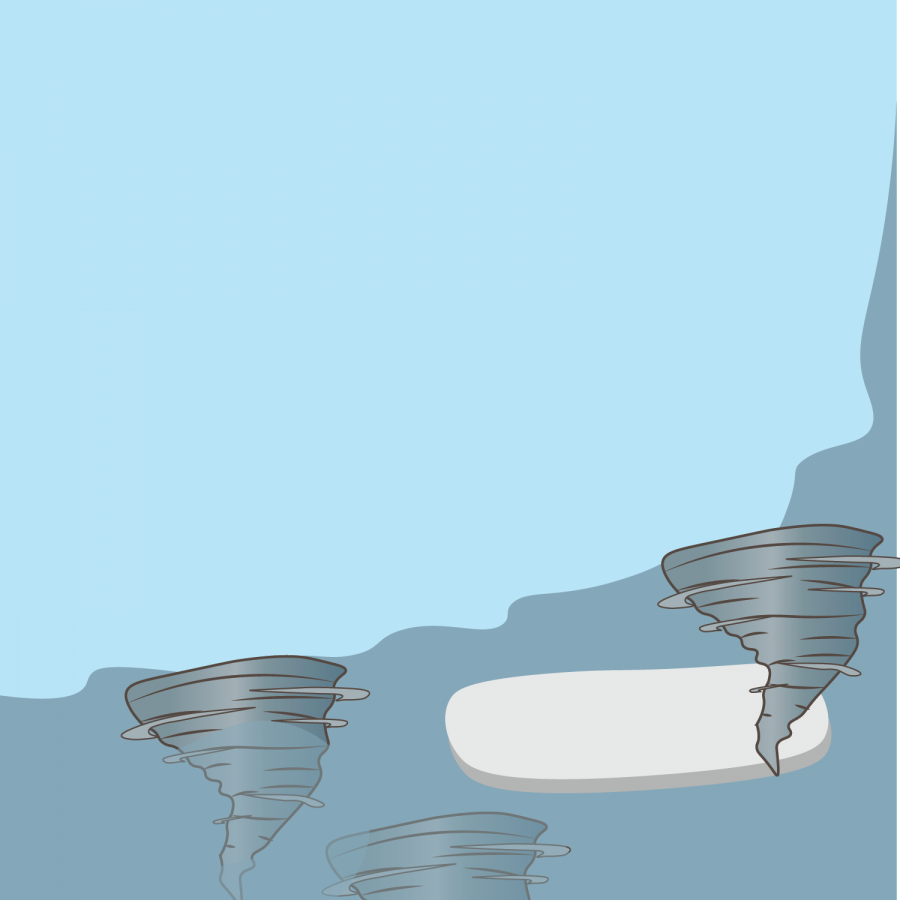Arctic sea ice and US tornadoes: an unexpected correlation
Sep 20, 2018
Last updated on Feb. 5, 2019 at 06:15 p.m.
It is very difficult for meteorologists to predict when a tornado will strike or how devastating an upcoming tornado season will be. A challenge to study up close, twisters often only last for minutes and are too small to be spotted on today’s best climate models. It is not even fully understood why some storms create tornadoes, while others do not.
In the face of this prediction problem, Jeffrey Trapp believes he found a connection with Arctic sea ice that may help future meteorologists better understand the destructive phenomenon.
Trapp, a professor of atmospheric sciences at the University, published a paper in “nature” in early August that suggests fewer tornadoes occur in the United States when there is less sea ice present in the Arctic.
Working alongside professor Kimberly Hoogewind from Purdue University, Trapp used pre-existing data collected from 1990 to 2015 to make monthly comparisons between Arctic sea ice coverage and the frequency of tornado reports in the U.S., where about half of the world’s twisters occur. Through statistical analysis, Trapp found a significant, direct relationship between the two phenomena.
Get The Daily Illini in your inbox!
“We found that when the extent of Arctic sea ice is relatively low, we tend to see reduced tornado activity, or fewer days of tornadoes within the U.S.,” Trapp said. “In contrast, during years where the Arctic sea ice is relatively large, we tend to see an above-average number of tornado days.”
Beyond this statistical correlation, Trapp goes a step further and proposes a possible physical explanation: Retreating Arctic ice might make conditions in the U.S. less suitable to form tornadoes.
“Tornadoes really need two things in order to happen,” said Jeffrey Frame, University assistant professor of atmospheric sciences. “They need instability in the atmosphere — warm, moist air near the ground and fairly cool air aloft — and they need vertical wind shear, which is a change of wind speed or direction with height.”
There is plenty of atmospheric instability during the warm spring and summer, when most tornadoes occur, but vertical wind shear is weak at that time of year. Trapp hypothesizes that melting Arctic ice shrinks the temperature difference between the north and south parts of the country, further weakening vertical wind shear and discouraging tornado formation.
This proposed explanation would also explain why Trapp saw a consistent decrease in tornado activity over the 25-year period he surveyed, despite improvements in reporting.
“With every climate change scenario, you warm the Arctic more than you warm the tropics, so that decreases both the temperature change and the average wind shear,” Frame said. Less wind shear likely means fewer tornadoes, so global warming might reduce the frequency of twisters in the U.S.
However intriguing and plausible, Trapp’s study and proposal are preliminary and need further testing, said Zhuo Wang, University professor of atmospheric sciences who researches predictions of extreme weather.
“The specific physical processes responsible for the link between the Arctic sea ice and tornado activity are not well understood,” Wang said. “In addition, one cannot completely rule out the possibility that the Arctic sea ice and mid-latitude tornado activity are both modulated by a third factor.”
Consequently, Wang suggests running simulations on climate models, where scientists can manually control variables, like sea ice coverage, and test for a direct causation.
“While numerical models have uncertainties and biases and need to be used and interpreted with caution, one limitation of statistical analysis of observational data — as in this study — is that it doesn’t nail down a causal relationship,” Wang said. “Although a significant correlation is found, further study is required to find out whether the Arctic sea ice variability is the driver.”
Trapp agrees that computer model testing is needed to further explore his findings and test whether retreating sea ice really does discourage tornado formation. But even now, his work raises compelling ideas and questions as meteorologists continue to search for answers on extreme weather.
“We’re pretty excited because it gives us a potential explanation for something that has been confusing for us to try to understand,” Trapp said.






